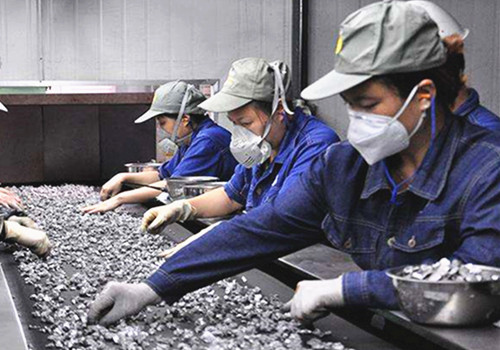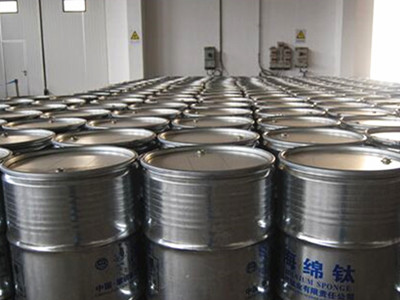What is titanium sponge?
Titanium is silver colored and one of the most corrosion-resistant structural metals. It took 120 years from the first titanium discovery in the late 18th century to the production of pure titanium and then the metallurgist spent nearly 40 years put the pure titanium obtained in the laboratory into the industrial production. Many researchers have done plenty of experiments. In 1948, Dupont company finally successfully produced tonnage porous and irregular shape titanium, that is, sponge titanium.
The production principle of sponge titanium is to reduce TiCl4 by Mg and generate Ti and MgCl and then vacuum distillation to remove the residual Mg and MgCl2 to obtain a pure, spongy, multi-empty titanium lump. The titanium lump is taken out, peeled, cut, and crushed to make sponge titanium.
During the reduction, distillation process, influenced by the complex factors such as temperature, pressure, furnace condition and segregation, there exist some impurities in titanium sponge lump. According to Chinese standard GB/T 2524, titanium sponge can be classified 0-5 levels, a total of six grades, namely the MHT 100, MHT 110, MHT120, MHT140, MHT160, MHT200 (The number refers to Brinell hardness maximum values), purity (%) quality generally is 99.1 ~ 99.7, total impurity elements (%) of 0.3 ~ 0.9, impurity element oxygen quality (%) of 0.06 ~ 0.30, hardness (HB) is 100 ~ 200.
How was the titanium sponge packaged?

Accoding to Chinese national standard: sponge titanium is packed according to the net weight of 70kg ~ 250kg per barrel (piece), the packing barrel is galvanized iron barrel lined with polyvinyl chloride film bag, sealed with open cover, the junction of the barrel cover and the barrel body should be able to identify whether the package is intact. It’s usually 200 kilograms a barrel now for titanium sponge manufacturer. After packaging, the barrel is pumped out and filled with argon and should be stored in a dry warehouse, not piled up in the open air or mixed with acid, alkali and other corrosive items. The sponge titanium should be handled with care during transportation to prevent dampness and damage of seal.
How to maintain and storage titanium sponge?
 Titanium sponge oxidizes easily. Its large exposed area can absorb a lot of oxygen, the oxidized sponge titanium is impossible to remove oxygen elements in the casting of titanium ingots unlike steel making and only be discarded.
Titanium sponge oxidizes easily. Its large exposed area can absorb a lot of oxygen, the oxidized sponge titanium is impossible to remove oxygen elements in the casting of titanium ingots unlike steel making and only be discarded.
Long-term storage of titanium sponge is costly and dangerous. It’s said that sponge titanium can be stored for three years with argon gas filled in PVC film bags, but it was denied by titanium processing plant. Generally speaking, the longest period of one year is appropriate. Besides, the storage of sponge titanium must require regular rotation, generally one-year rotation, so that the storage cost of sponge titanium will be very high.
Spongy titanium Storage is dangerous. The titanium sponge allows 5% powder, so that in the processing and treatment of titanium sponge if dust clouds produced, it is easy to cause combustion when met open fire or electrostatic fire.
In conclusion, sponge titanium is not suitable for long-term storage. The porous “sponge titanium” cannot be used directly and must be melted into liquid in an electric furnace before it can be cast into ingots. Titanium ingots are in a dense state, which is a necessary process in the titanium production and is convenient for loading, unloading and handling. Therefore, in terms of the advantages like the low cost of maintenance, fire and shock resistant, recyclable, economy and convenience, it is quite appropriate to store titanium ingots.
Sponge titanium production is the basis of titanium industry and titanium sponge is an intermediate product in its purest form and material for titanium alloy. It is mainly used to produce titanium ingot, which in turn is used to make slab, billet, pipe, bar, plate, sheet, and other titanium mill products such as titanium alloys, billets, ingots etc.


